We have Don Draper to blame for making traditional advertising look so fascinating. The deep dive into the era’s marketing tactics showcased the power of the right ad, back in the heyday of traditional media formats.
But today, over half of the global population is composed of active internet users—meaning that this may very well be the golden age of digital marketing instead. How can you choose between the tried-and-true traditional methods vs. up-and-coming digital formats? Here’s what you should know about the main differences between these types of marketing.
Target Audiences
As you’d expect, one of the most obvious differences between traditional and digital audiences is the target market. Traditional marketing makes it easy to reach local audiences via local strategies. For example, newspaper ads, brochures, and letters physically make their way into the hands of your audience, tradeshows and direct sales let you talk to consumers in person, and radio and television ads share your message with local households.
Digital marketing, on the other hand, reaches people where they are—online. And it has the potential to reach people both locally and all over the world, just with a few clicks.
Audience Interaction
With many types of traditional marketing, there’s little to no room for customer interaction. Once you’ve read the newspaper article or watched the commercial, your time with the brand is done. There’s no two-way interaction to make your audience feel heard or understood.
With digital marketing, it’s possible for marketers to engage their audience through interactions around their content. Social media sites allow followers to share their loyalty, apps allow them to make orders or provide feedback, and chat boxes on a website let them ask questions in real-time, moving them further down the marketing funnel.
Marketing Costs
The costs for both traditional and digital marketing can vary wildly. A billboard, for example, can cost a lot more than a small mail campaign if you’ve opted for traditional marketing. With digital marketing, PPC ads will require more of an investment than basic SEO work on your website.
However, in general, digital marketing is less costly than traditional marketing—and your efforts can reach a much greater audience without the need for additional printing.
Campaign Analysis
To analyze a traditional marketing campaign, you have to wait until it has run its course, which can take weeks or even months. With digital marketing, on the other hand, you’ll be able to use online analytic tools to understand customer behavior and your campaign success in real-time. It makes it easier to refine your strategy on the go, rather than waiting for results to redirect your efforts.
It’s also worth mentioning that traditional marketing campaigns can take a while just to start, as you’ll often need to print and send out materials to reach your audience. With digital marketing, a few clicks can get your campaign in front of the eyes of users right away.
Traditional and digital advertising both have their strong points and limitations. It’s never a bad idea to use both of them together—especially when you’re focusing on local branding. No matter which you opt for, it’s all about finding the right strategy to make your campaign work.
If you’re considering marketing your brand, our full-service agency can help. Partner with us today to get your message in front of the people who need to see it. No matter where they are!
Lara Schmoisman, CEO & Founder of The Darl and Marketing Simplificado



